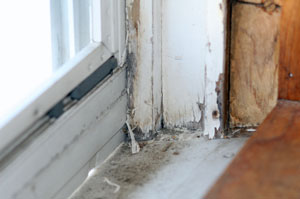If lead is found in your home, an experienced professional needs to be hired to remove it. Likewise, if you suspect lead a professional test is also important. However, there are more economical ways to avoid lead in homes that carry lower risks of lead contaminant.
Lead is a substance found in many older products, as well as the recent toy recalls in the United States. It affects everyone, but young children and developing fetuses are at the highest risk. Lead exposure affects the neurological system as well as the other systems of digestion and reproduction. Care must be taken to avoid lead exposure and to remove lead from homes.
By knowing where to look for lead in the home, you can establish your risk of lead levels. Anything painted before 1978 probably was painted with lead based paint. Soil can pick up lead from leaded gasoline (no longer used in most vehicles in the USA.) Some imported items still contain lead based products; choose children's items carefully.
If you suspect high levels of lead in your home or if someone in your family experiences lead exposure symptoms, consult a professional and a doctor. For most homes, the risk is minor and can be eliminated efficiently and with minimal cost.
Old paint can be covered with new paint. Apply a strong primer and several coats of new, lead-free paint. This will not remove the lead from your home, but it will block the family's exposure to it. Maintain these new surfaces; don't let the new paint chip or peel to expose the old paint. This is only to be done on surfaces in good shape. Paint that is cracking, peeling, chalking, or otherwise deteriorating needs to be removed by a professional. Improper removal of lead paint can actually increase the family's risk of lead exposure.
If you're concerned about the lead in the soil, plant grass. Grass is an interim way to block the exposure of lead from your family. Build a sandbox for children to dig in rather than dirt.
Keep your home clean. Areas like windowsills need to be cleaned weekly with all-purpose cleaner to remove dirt that might be carrying lead. Wash rags used for cleaning dusty surfaces since lead contaminants can be transferred during the next cleaning if the dust isn't removed.
Keep the family healthy. People who have healthy diets absorb lead in smaller amounts. Diets especially high in calcium and iron are helpful in the prevention of lead poisoning.
While municipal water supplies don't usually contain lead, the pipes in your home might. Allow the water to run for 20 seconds before drinking it. Bathing and washing is safe since lead isn't absorbed through the skin. Only drink or cook with cold water; lead tends to bond better to the hot water from your pipes.
Watch for toy recalls. Immediately return toys which contain lead paint.
Take special caution when working with lead based activities such as pottery, glass making, or furniture refinishing. Know if local factories are exposing lead into the air or if your job might send you home with lead coated dust on your clothes.
The National Lead Information Center
Consumer Product Safety Commission (CPSC)

Add your voice! Click below to comment. ThriftyFun is powered by your wisdom!
Lead in Massachusetts is a real problem when selling or buying a home. You have to have a home inspected for lead & the cost of professional removal is very expensive. Other states that I have lived in have been laxer about lead paint, but I do think it is good to know what's in a home. Just removing paint from a home stirs up a lot of the lead paint dust & can be a problem. I have to say though that lead paint lasted a whole lot longer then the newer paints.
Our local health department has little swab kits you can use to test for lead. Lead paint in the old days was actually very expensive, so it was used primarily on trim rather than walls or the outside of homes, so windows are prime areas you'll find lead.
Add your voice! Click below to comment. ThriftyFun is powered by your wisdom!